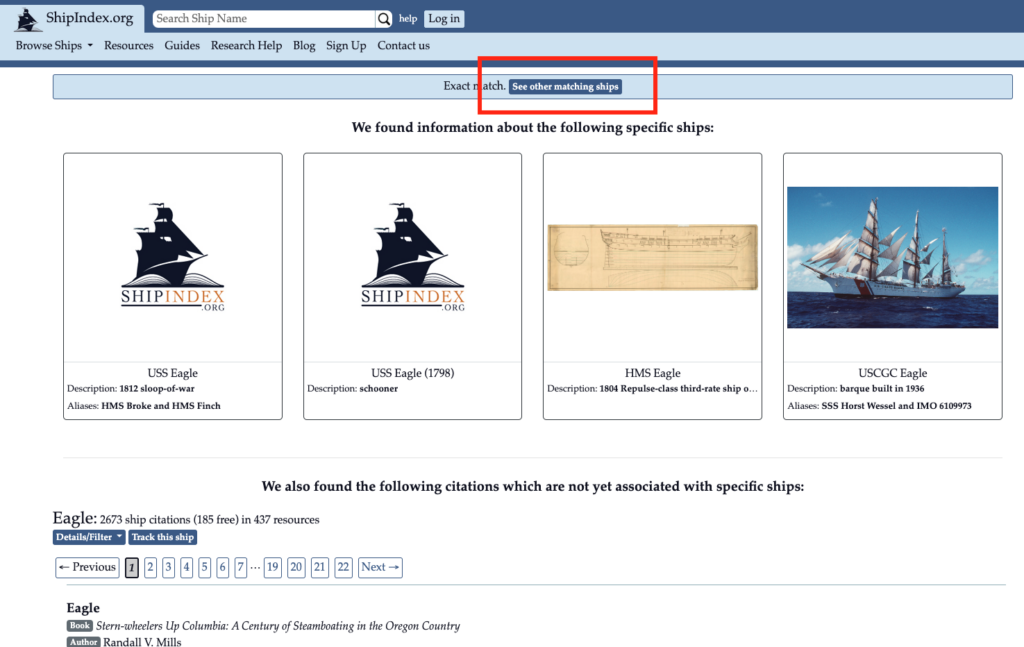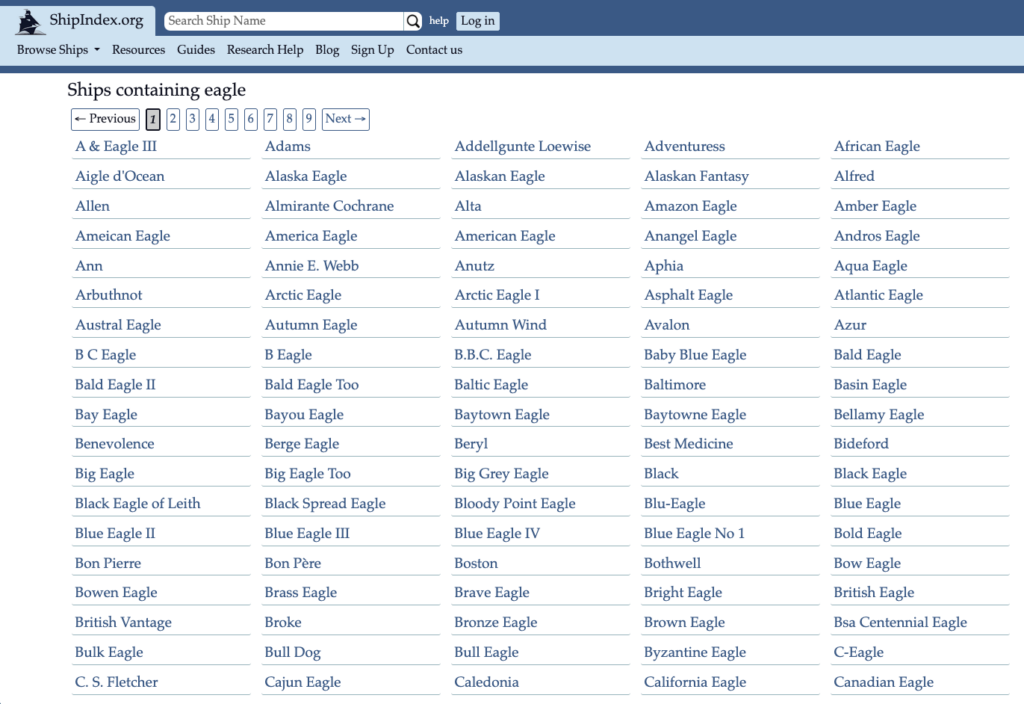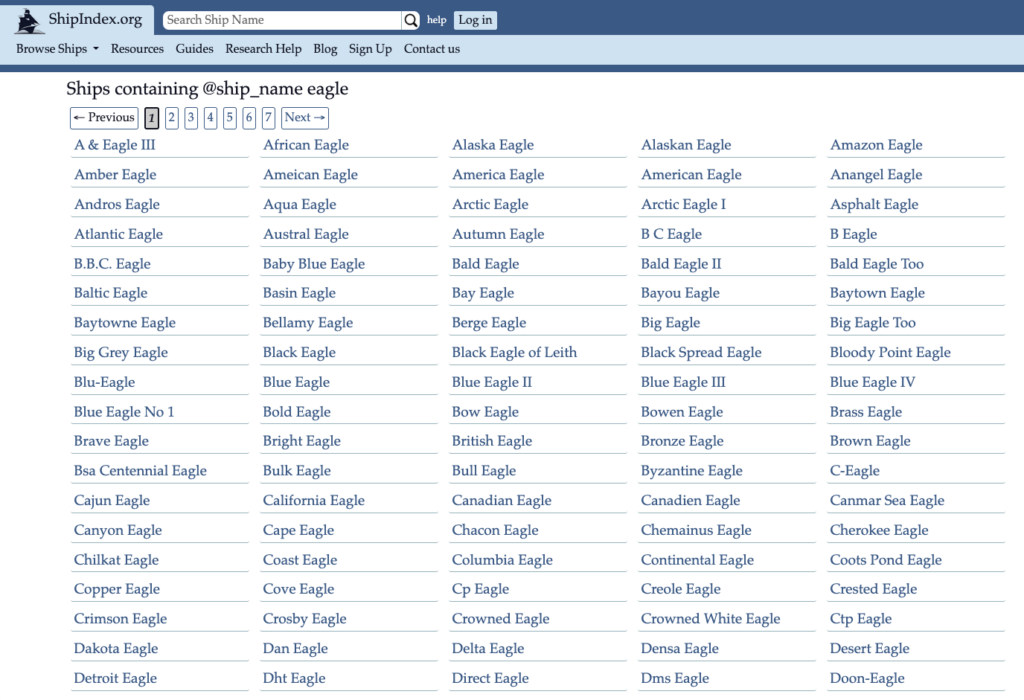The video below shows effective ways of using the ShipIndex.org database. It’s good to know what the database can, and cannot, do.
Here’s an overview: ShipIndex.org tells you what books, journals, websites, databases, resources, and more, mention the ships you want to learn more about.
There are, basically, two versions of the database: the free database and the subscription database. You’ll find over 150,00 citations, and lots of great content, from many significant books in maritime history, in the free database. You’ll also find links to subject headings in WorldCat, though have significantly declined in value, due to a change by OCLC, WorldCat’s owner, this past month. Read more about that here.
The subscription database has over 3.2 million citations in it, and it’s always growing. The subscription database contains lots more online content than the free database, plus many, many new books in maritime history. All content that’s been added since 2009 has gone into the subscription database, except for updates to the WorldCat file.
Watch this video to learn more about the specifics of searching the database, and a bit more about what you can expect:
Subscribing to the database is inexpensive and easy — you can subscribe for a set period of time, from two weeks to a year, or you can subscribe on a monthly basis, in which the subscription will continue until you cancel.
You might also find that an academic or public library near you subscribes to the database. If you’d like to suggest that your local public or academic library consider a subscription to ShipIndex, please take a moment to tell them about the database! We can set up a trial for them, and if they let patrons access resources during a trial, you could use it then. Ask your librarian to contact us about options for subscribing!
We believe strongly in the importance of maritime museums, so we offer free access to the full database for all full members of the Council of American Maritime Museums (CAMM). A museum staffperson can contact us to get access set up on their campus and in their buildings. If they so choose, they can offer this access to museum visitors, as well, such as in their library or through their wifi network.
Basic advanced searching
When you search for a ship name, you’ll often see the following phrase at the top of a results page: “See other matching ships”.
This means that, in this case, you’re looking at ships whose full name is “Eagle”, excluding any prefixes like “HMS”, “USS”, or of course, “USCGC”.

When you click on the “See other matching ships” link, which is in the red box shown above, you get this result:

Each ship name here either contains the word “Eagle” in the name, or somewhere in the citation. With a common one-word name like “Eagle”, this can be overwhelming. The next step is to narrow down the search, by using this search term: “@ship_name eagle“, to get this result:

Now every citation has the word “Eagle” in it, which definitely narrows down results. But there’s more that can be done to get to better results. See our video on advanced searching, to learn more.

I have been looking for over 20 years for where a close ancestor drowned at sea. His name was William Whitesides Singleton. Born in 1811 and died during the California goldrush. He was a Crewman on a ship that was either taking people to California in the 1850’s or bringing the home. I can’t find his name on any ship I have looked at Great American but no luck. Any help would be appreciated. He was my great great grandfather. Lived in Montgomery, MO. Thank you in advance for direction.
I don’t think my inquiry is relative to this site. I am trying to find information about my husband’s great great grandfather who was a fisherman killed at sea on a fishing trip between 1883 and 1888 in Buxton, NC. Do you know where I can research that? Any information would be greatly appreciated!